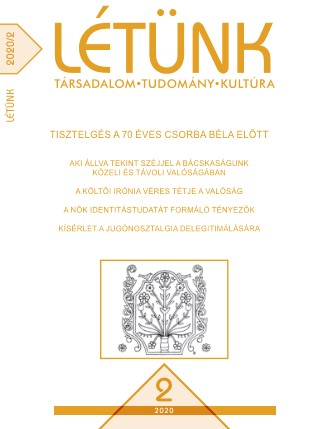FOLKLROLIZMUS A TELEPÜLÉS MEGŐRZÉSÉNEK SZOLGÁLATÁBAN: A KANIZSAMONOSTORI PÉLDA
Folklorism in the Service of Settlement Conservation: The Case of Banatski Monoštor
Author(s): Valéria BeszédesSubject(s): Cultural history, Architecture, Local History / Microhistory, Sociology of the arts, business, education, Migration Studies
Published by: Fórum Könyvkiadó Intézet
Keywords: migration; Banat; Nine-hole bridge; eviction; school closure; church building; architectural values; depopulation; folk art camps; survival
Summary/Abstract: Medieval Hungary was a densely populated, developed area that remained largely devoid of population after the Battle of Mohács. Resettlement from the end of the eighteenth to the first third of the nineteenth century continued uninterrupted and this significant period represented the time when the Hungarians from the Szeged region took possession of Banat. I paid attention to Banatski Monoštor when the first camp of folk music and folklore was organized by the Ferenc Mora Cultural Center in Čoka in the early 1990s. It is also part of the truth that, at the time, as a guardian of culture in Banatski Monoštor, I didn't find much worth mentioning. According to the construction inspector of Čoka, Istvan Čonti, Banatski Monoštor represents the Vojvodina example of the famous ethnological rarity, the village Hollókő (Raven stone) in northern Hungary. In 2010, we investigated the settlement with the employees of the Inter-municipal Institute for the Protection of Monuments in Subotica and summarized the results obtained and the experience gained in the article. The result is not encouraging, the village is doomed to extinction. The architectural heritage of the settlement is not exceptional, the population is old, there are no job opportunities, however, the folk music and folklore camps held in Banatski Monoštor can provide an opportunity to preserve this settlement with a long history, which ultimately served as a place from which the resettlements again occurred during the eighteenth century.
Journal: Létünk
- Issue Year: L/2020
- Issue No: 2
- Page Range: 99-118
- Page Count: 20
- Language: Hungarian

